Scarcity of Water and Land Shifts Geography of Food Production and Irrigation Networks to China’s Northeast
Rich land, ample water, and human persistence have turned virgin prairie into the nation’s primary breadbasket.
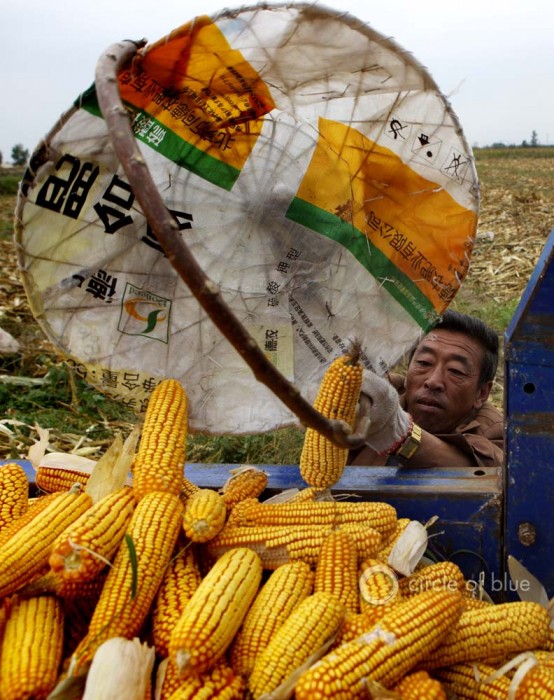
By Keith Schneider
Circle of Blue
YOU YI, Heilongjiang Province, China — On the south side of the two-lane highway leading to the largest farm in China, the angled sun paints a curtain of water from a spray irrigation rig the colors of a rainbow. All aluminum tubes and angled corners, the rig spans a sugar beet field so large that a tractor at the far end looks as small as the period at the end of this sentence.
On the highway’s north side, men and women wield shovels to tap mud against the walls of new concrete irrigation canals. Loose ends of white scarves that the women wrap around their hair and faces fall to strong shoulders. The sounds of the construction project — tap, tap, tap — mix with laughter on a sunny June morning. Pride and good cheer are evident everywhere on the state-owned, 120,000-hectare (296,000-acre) You Yi Farm.
Sixty years ago, more than 100,000 Chinese soldiers were dispatched here to plow virgin prairie and plant rice and corn. Last year, Heilongjiang and its network of state-owned farm enterprises became the top grain-growing province in China, making up about 10 percent of the nation’s 571-million-metric-ton grain harvest, which was the world’s largest. By any measure, Heilongjiang’s farm productivity is an exceptional achievement that is celebrated nationally.
In fact, the northeast region of China — which includes not only Heilongjiang, but also neighboring Liaoning and Jilin provinces — harvests more than 100 million metric tons a year, or about 18 percent of the country’s grain, and is now among the world’s most important breadbaskets.
By 2020, China anticipates needing nearly 600 million metric tons of corn, rice, and wheat annually, which is about 5 percent more than is grown now, to feed its people — and China is counting on these three northeastern provinces to deliver 80 percent of that increased harvest.
In elevating Heilongjiang and its neighboring provinces from the bottom of the farm production pack to the very top during this decade, China has shifted the geographic center of its grain harvest from Henan and other central provinces to the northeast, where there is abundant water and some of the world’s most fertile black earth.
Advocates say that plans to rebuild and expand irrigation networks here will increase crop yields. But deep doubts abound in universities and on the street with regard to China’s relentless pursuit of ever-larger harvests and the rising risks to erodible land, water supplies, water quality, and public safety that China seems prepared to accept in its northeast and other farming regions.
“China has reached the stage where these concerns cannot be ignored, and they aren’t being ignored,” said Qian Yi, a professor of environmental policy and dean of the Qingdao University of Science and Technology. “We’re doing better, but we still have a lot of problems. We’ve got a lot of work to do.”
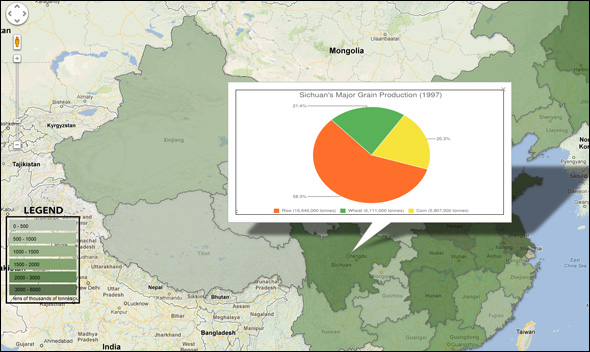
How China, a nation that knows starvation, developed such assurance is a history lesson in the convergence of central planning, technology, and human determination with fertile ground and ample water resources.
Good Soil, Ample Water
You Yi and much of Heilongjiang Province is located atop a crescent of deep and fertile black dirt, comparable to Ukraine’s wheat region and America’s Midwest Corn Belt, that reaches from the Russian border north of here all the way to Jilin Province, thousands of kilometers to the south.
–Li Fanghua, senior engineer
Heilongjiang Water Conservation Institute
Though there are other soil types, northeast China’s black earth, encompassing 10 million hectares (25 million acres) and irrigated by the ample waters of the Songhua River Basin, supported 60 percent of Heilongjiang’s 55.7 million metric tons of grain that were harvested last year. That is more than double the harvests of wheat, rice, corn, and soybeans that Heilongjiang’s farms produced in 1991, according to China’s National Bureau of Statistics.
Considering that the national grain harvest rose from 435 million metric tons in 1991 to 571 million metric tons in 2011, Heilongjiang’s grain producers — by themselves — have accounted for almost one-quarter of China’s steadily increased harvests.
And Chinese farm authorities are now pressing these northeast farms to produce even more. One signal of the geographic shift in production is to provide farms with cleaner sources of water and to provide water to land that is not currently irrigated.
Li Fanghua, a senior engineer at the Water Conservation Institute of Heilongjiang Province, said that northeast China is determined to keep its place in the nation’s rice and corn pecking order. According to Li, 80 percent of the anticipated increase in the nation’s grain harvest over the next decade will occur because of the increases in yield from better water and more water to larger expanses of lands that are not served by irrigation channels. There is no question, she said, that northeast China will achieve its grain production targets.
“Our geography. Our weather. The amount of land we irrigate and will irrigate,” Li told Circle of Blue. “We will reach and exceed those targets.”
Such tactics make sense. Heilongjiang has 80 billion cubic meters (21.1 trillion gallons) of fresh water in reserve, some of the most abundant and accessible freshwater resources in the country. Precipitation and river level records show they are also among the most stable.
Heilongjiang also has an irrigation network as extensive as any in China.
In 2010, according to provincial records, 5 million hectares (12 million acres) were irrigated here, which is about one-third of the province’s total 16 million hectares (39.5 million acres) of cropland. Earlier this year, China’s central government announced a five-year, $US 6.3 billion (38 billion RMB) program to rebuild and expand irrigation networks in Heilongjiang, Jilin, Liaoning, and eastern Inner Mongolia. Replacing northeast China’s leaky, half-century-old, mud-bottom irrigation canals with concrete channels and expanding the irrigation network to the expanses of farmlands that are not currently irrigated will raise yields per hectare by an estimated 20 percent or more over the next decade.
“We have enough water,” Li said. “But it is not distributed everywhere. There are 240 million mu (16 million hectares, 39.5 million acres) of farmland here. One-third is irrigated, and two-thirds of farm production comes from irrigated land. You can see why irrigation is so important.”
Fertilization and Pollution
Good soil and seed. Adequate nutrients and moisture. These are the essential elements of crop production in every nation, including China. Since a catastrophic famine from 1958 to 1962 caused the starvation deaths of 30 million to 45 million Chinese peasants — the result of the central government’s focus on industrial advancements instead of grain production — a top priority of modern-day China’s leadership is generating sufficient stores of food.
China has plenty of good seed and nutrients. The nation’s network of agricultural universities and its big grain companies have developed strains of rice, wheat, corn, and soybeans that grow well in China’s various climates and soil types.
–Duan Aiwang, dean
Farmland Irrigation Research Institute
Northeast China’s powerful harvests — along with increasing farm productivity in Hebei, Henan, Shandong, and several other big agricultural provinces — have clarified China’s proven capacity to feed itself. The prospect of food shortages is no longer in question, at least not for decades, say You Yi Farm managers and agricultural authorities.
The bounty of Chinese harvests is on display in the outdoor markets of Harbin, Heilongjiang’s capital. Crowds of buyers press around vendors offering a cornucopia of grains, vegetables, fruits, meats, and other foods in an abundance, color, and variety that is rarely matched in the United States. Likewise, indoor supermarkets are a rushing stream of shoppers, gathering up fruits and meats and packaged products, most of which are produced in China.
What is in worrisome is the damage to the nation’s water and land that China appears ready to accept to ensure that its growing population — with its much stronger appetite for grain-fed beef, pork, and chicken — is handsomely fed.
The risk to natural resources is apparent here. Heilongjiang’s farmers are among China’s heaviest users of fertilizer to boost yields, which have doubled from 2.5 metric tons per hectare (2,200 pounds per acre) in 1994 to more than five metric tons per hectare (4,400 pounds per acre) in 2010.
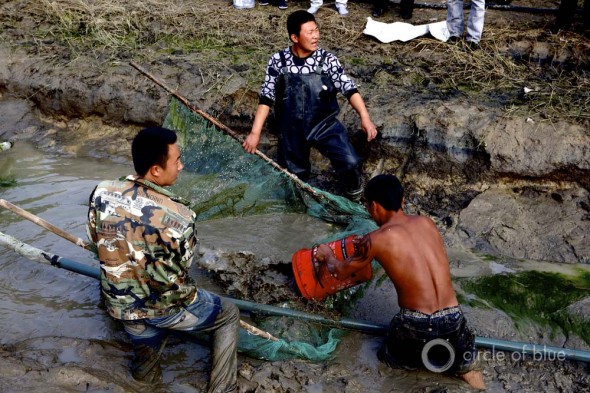
But provincial environmental reports show that Heilongjiang’s $US 22.4 billion (RMB 135.6 billion) farm sector uses 74 percent of the province’s water supply and last year contributed most of the 3.81 million metric tons of ammonia and nitrogen in the province’s treated and untreated wastewater.
The result is excessive levels of water pollution.
On the national level, Chinese farmers applied 55.6 million metric tons of fertilizer to grain fields in 2010, according to the National Bureau of Statistics. That is more than three times as much nutrients as U.S. farmers used that same year and a big reason why runoff from farm fields is a critical water pollution problem in China.
Some 60 percent of the waters of the Songhua River Basin, which supplies water to this region’s irrigation networks, are rated as so contaminated with agricultural chemicals and industrial wastes that they are unfit for human contact, according to China’s Ministry of Water Resources.
Erosion and Desertification
The environmental risks of expanding grain production also apply to the land, which is in short supply, according to Duan Aiwang, the dean of the Farmland Irrigation Research Institute in Xinxiang, a city of 5.7 million residents in Henan Province, the nation’s largest wheat producer.
“It is difficult to find new farmland in China,” he explained. “In central China, we are already using every piece of land. In northern China, there is land, but there isn’t much water.”
China’s response to these impediments is to expand irrigation networks to Heilongjiang and three other northeast provinces, including a plan to open highly erodible grasslands to crop production.
A five-year research program on erosion by scientists at the Heilongjiang Agricultural Modernization Research Institute found such serious soil erosion in the black earth crescent that, in some places, fertility and organic matter had dropped by more than 50 percent. The researchers also found that the original thickness of the black earth, which measured 30 centimeters to 100 centimeters (12 inches to 79 inches) deep before the great grain expansion, was 0.3 to 1 centimeters (0.1 to 0.4 inches) thinner.
There are few large stretches of unbroken and fertile prairie left in the eastern regions of Heilongjiang, Jilin, and Liaoning provinces. As a result, Duan told Circle of Blue, central government planners are giving serious consideration to opening crop production to 30,000 hectares (74,000 acres) of highly erodible, high plains grasslands where the dry western regions of the three provinces bump against the border with Inner Mongolia.
China’s experience with grasslands agriculture has been miserable, say global experts. According to conservative estimates by the United Nations, Inner Mongolia is losing about 5,000 square kilometers (1,900 square miles) annually to the desert — in other words, an area the size of New Hampshire is lost to sand and wind every five years.
The prospect of plowing grasslands in northeast China invites further abuses to the land, raising alarms among land and water conservation groups who consider the proposal a serious ecological mistake.
“It is a terrible idea,” said Li Qinglu, a retired chemical engineering professor, grasslands expert, and consultant to PanJin Environmental, a non-profit group in Shenyang, the capital of Liaoning Province. “Productive cropland depends on water. There is not enough water in those areas. The land is dry.”
Li explained that an early experiment in grasslands cultivation after World War II resulted in such extensive erosion and destertification in western Liaoning Province that government authorities quickly curtailed the project and focused on restoring the damaged land.
“Our grasslands recovered quite well,” Li told Circle of Blue. “Grass grew waist high. There was still some damage, but it was not serious.”
In 1983, though, as the central government called for more grain, grasslands in the region were reopened to cattle and sheep grazing and some dry-land crop production. Again, Li said, huge expanses turned to dust. The depleted land no longer was capable of growing crops, and farming stopped.
There is ample reason for China’s farm authorities to view the country’s grasslands as a potential source of new cropland. Of the country’s 330 million hectares (815 million acres) of undeveloped grassland, almost half are located in the desert regions of northern China.
When asked about the effects of developing new irrigated cropland from these desert grasslands, Duan Aiwang acknowledged the high risks.
“Water shortage is serious there,” he said. “If we develop new irrigation, we will carefully research the situation.”
Irrigation and Production
China irrigated 62.6 million hectares (154.7 million acres) in 2010, the latest year for accurate figures, or a little more than half of the 120 million hectares (300 million acres) of the country’s cultivated cropland. Much of the nation’s irrigation network is constructed of leaky concrete trunk canals and mud-lined feeder networks that lose water.
The national network is divided into 6,000 local irrigation projects, said Duan of the Farmland Irrigation Research Institute. Each of the 285 largest irrigation districts, he said, water more than 20,000 hectares (50,000 acres).
Because canals and feeder lines are expensive to build and rebuild, China’s program to modernize and expand its irrigation network — the most extensive of any nation — has not attained the same level of attention or funding as other infrastructure programs, like high-speed rail, highways, and the South-North water transport project, to name a few.
Still, China has increased the expanse of irrigated cropland an average of 645,000 hectares (1.6 million acres) a year since 1990. A $US 6.3 billion (38 billion RMB), five-year project to expand irrigation in Heilongjiang and three other northeast China provinces represents the largest single investment in canal modernization and expansion in recent memory, Duan said.
No province irrigates more land than Henan. Duan’s second floor office is within sight of northern Henan Province’s wheat fields. A latticework of canals transport water from the Yellow River to irrigate about half of the 5.28 million hectares (13 million acres) of wheat in Henan that is irrigated. In all, 5.1 million hectares of Henan’s 9.7 million hectares (12.6 million acres of 24 million acres) of land sown in grain is irrigated.
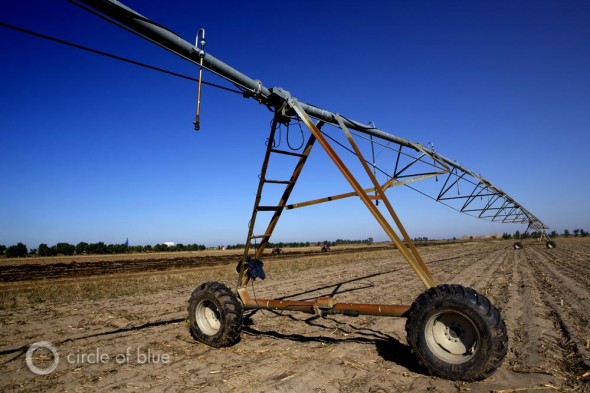
The next closest province was Heilongjiang. Because adequate moisture is so critical to crop yields, it is not surprising that Heilongjiang and Henan are China’s two largest grain producers.
50 Years of Centralized Farming
Not all that long ago grass was all that grew where the state-owned You Yi Farm now operates. In the early 1950s, Mao Zedong’s central government first dispatched 100,000 soldiers to northeast China’s wild prairie to turn virgin black dirt to produce grain. Waves of other settlers dragooned by the government also were sent to Heilongjiang throughout the 1950s and 1960s to break the prairie and to sow grain.
The You Yi Farm is the first, and — at 120,000 hectares (296,000 acres) — the largest of 114 state-owned and state-managed farms in Heilongjiang Province. You Yi means “friendship,” and the farm, one of 177 similar large projects nationwide, takes its name from the cooperative agreements that Mao’s government signed with the Soviet Union for assistance in developing the prairie.
The farm, established on 20,000 hectares (49,500 acres) in 1954 when the Soviet Union provided a grant to China, was the beneficiary of squat, gray tractors and Soviet advisors who taught the Chinese soldiers how to mechanize agriculture and how to build settlements. The earliest farmers lived in wood and mud huts without running water and endured winters that can be Siberian cold and summers that can be desert hot.
Zhao Yu Fu, a 49-year-old agricultural technology specialist, was raised on You Yi Farm, where his parents worked starting in 1958 and where he has spent his entire career. He remembers, in the 1970s, when he was a teenager, the relationship between China and the Soviet Union grew tense. By then, the farm was managed with military discipline, Zhao told Circle of Blue, and he can recall how he and other teenage sons and daughters of the first-generation farmers were trained in the use of firearms and field maneuvers.
“The mindset was military. We prepared for invasion, if it came,” Zhao said. “Our mindset was defense. We trained in a bootcamp. We learned to use a bayonet. We ran a lot. The border is just a 300-kilometer drive from here.”
During a mid-morning tour of the You Yi Farm, Zhao dropped to his knees at one end of a long row of planted soybeans to explain some of the farm’s agricultural prowess.
The contemporary farm employs 120,000 people and is managed from a city of 40,000 of the same name. You Yi’s yields are prodigious — 350,000 metric tons of corn, 650,000 metric tons of rice, 150,000 metric tons of sugar beets. Most of the harvest is irrigated, and 70 percent to 80 percent is exported to other provinces.
The You Yi Farm used to be a huge producer of soybeans, Zhao said. But provincial and central government officials determined that it is cheaper to import the bulk of the nation’s soybean demand, he said.
–Ma Dequan, director
General Bureau of Heilongjiang State Farms
From one end to the other, the row was covered with a thin sheet of clear plastic. Zhao dug beneath the plastic and pulled a thin plastic tube, with perforations every few centimeters, from the dark soil. There are thousands of linear meters of similar drip irrigation tubing just beneath all of the planted rows in this field. Zhao explained that the tubing prevents evaporation and saves water by delivering moisture directly to plant roots.
Chinese agronomists, he said, had worked with Israeli drip irrigation specialists to develop the system of drip tubing and plastic covering. Chinese engineers built the equipment to bury the tubes and simultaneously seal the rows.
The visual effect is arresting. The sun reflects off the plastic, like tin foil in an oven. The dark soil runs to the horizon in straight black lines. Early in the planting season, You Yi grain fields look like huge bakery shelves, with long rows of neatly wrapped loaves of fresh-baked bread.
“We spent 10 years developing this system,” Zhao said. “In the dry season, it has a big benefit. The ground stays wet. Yields stay high.”
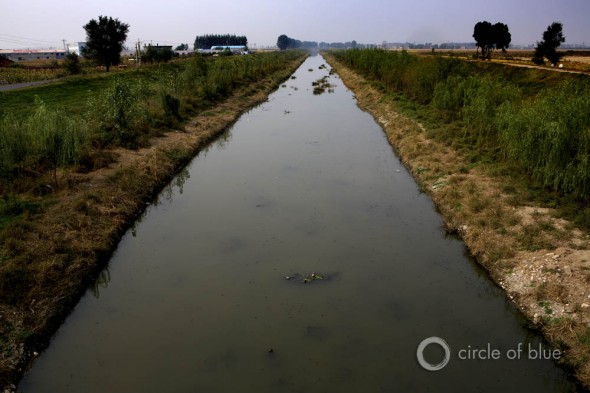
Photos by Adam Dean, as well as by J. Carl Ganter, Nadya Ivanova, and Keith Schneider of Circle of Blue. Google Fusion Table created by Samuel Kosinski, a Circle of Blue data intern, with assistance from Circle of Blue’s Aubrey Ann Parker and Jordan B. Bates. Choke Point: China II is in a project in collaboration with the China Environment Forum at the Woodrow Wilson International Center for Scholars.
Circle of Blue’s senior editor and chief correspondent based in Traverse City, Michigan. He has reported on the contest for energy, food, and water in the era of climate change from six continents. Contact
Keith Schneider

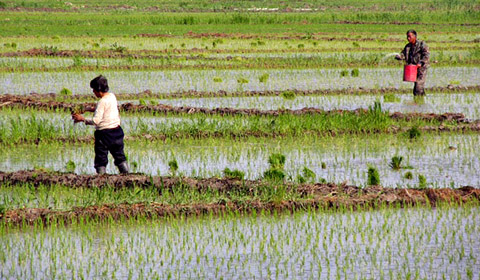
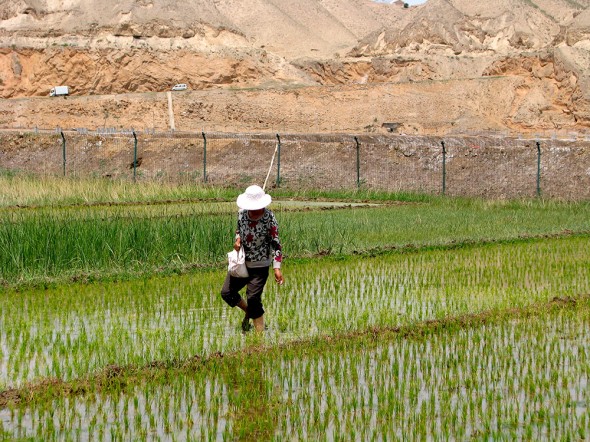

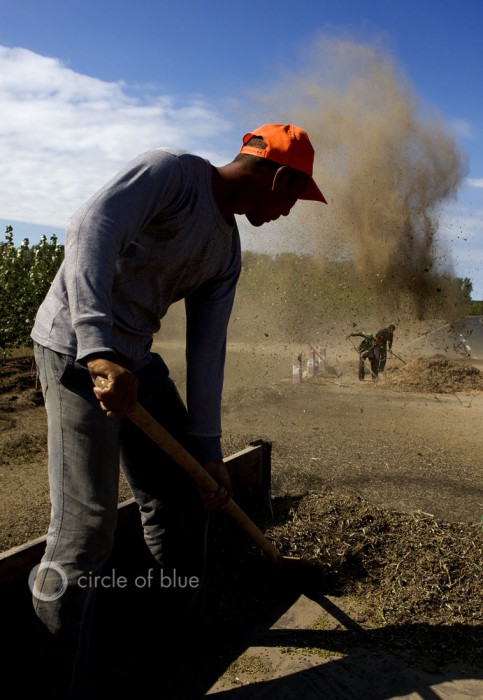
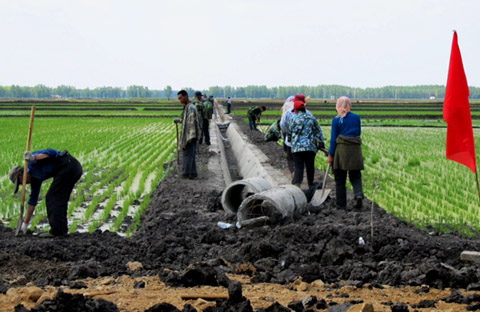

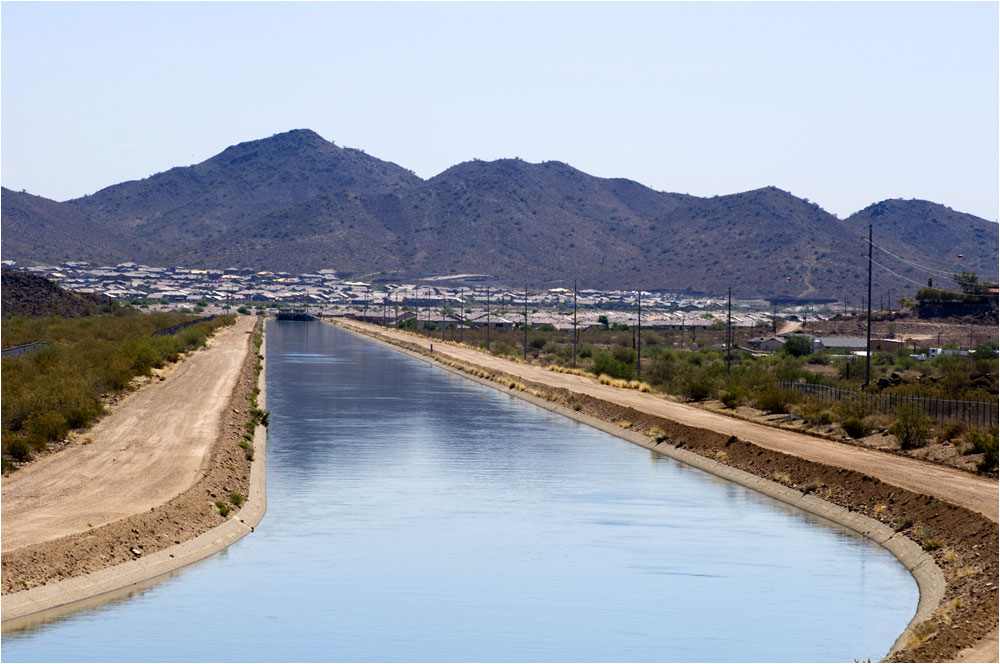
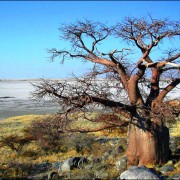


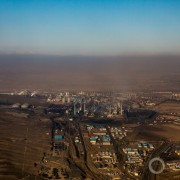


Leave a Reply
Want to join the discussion?Feel free to contribute!